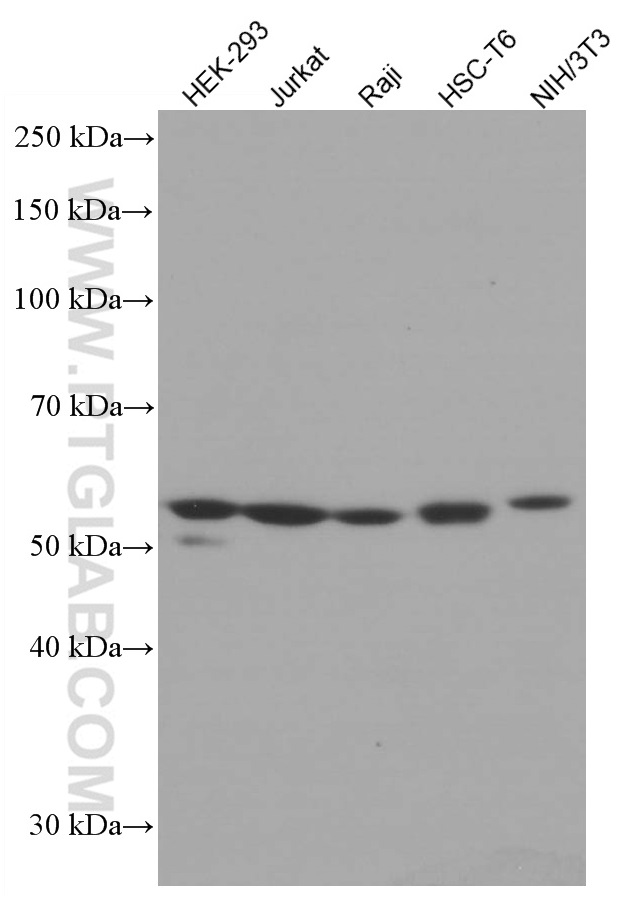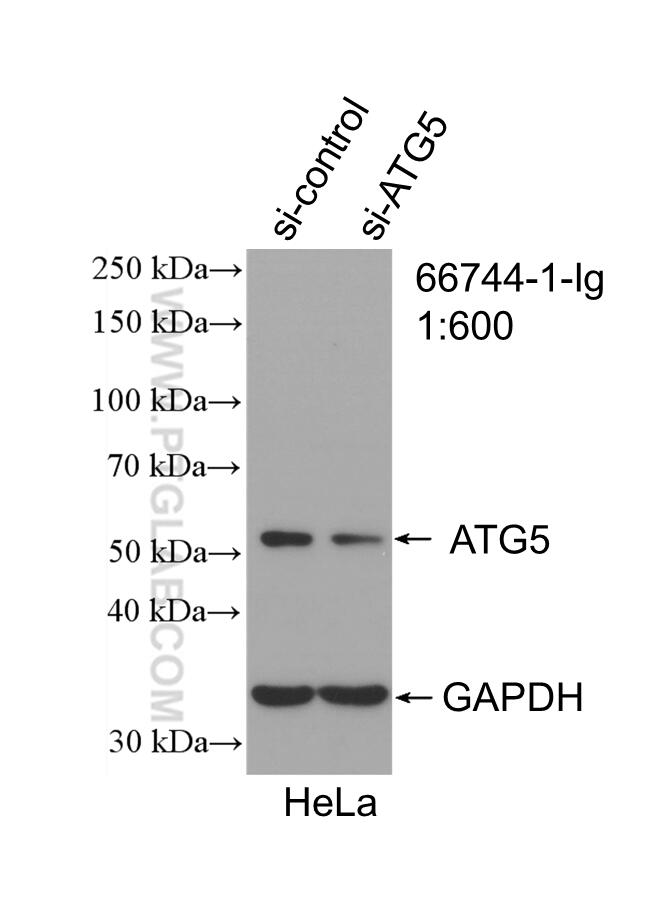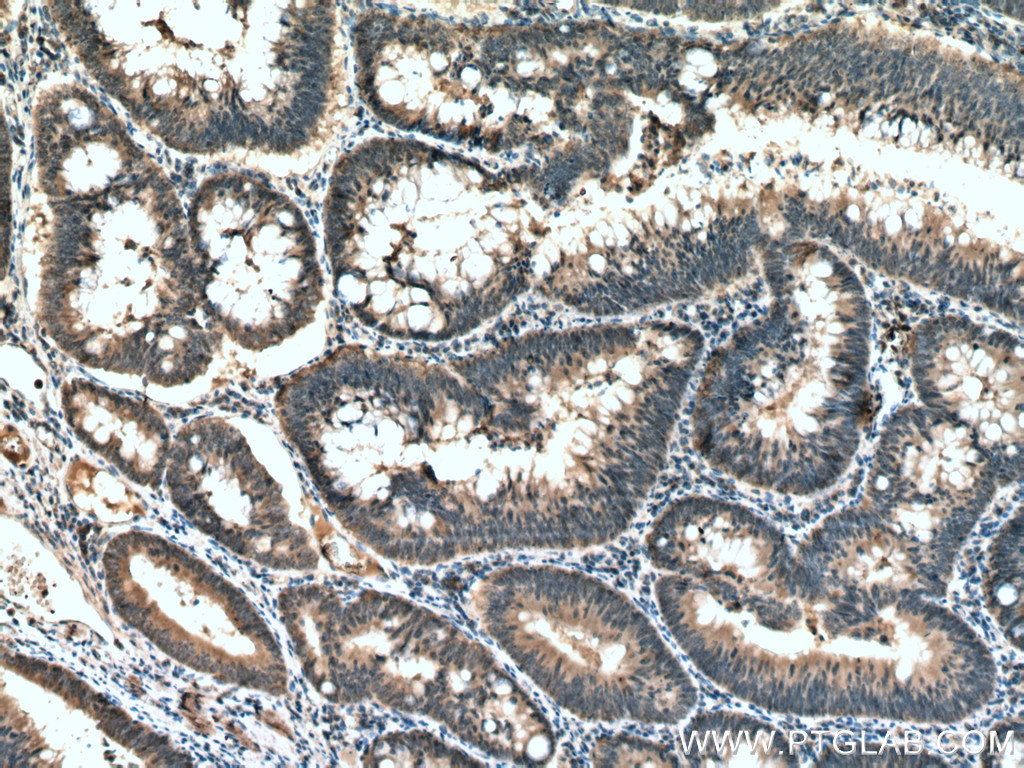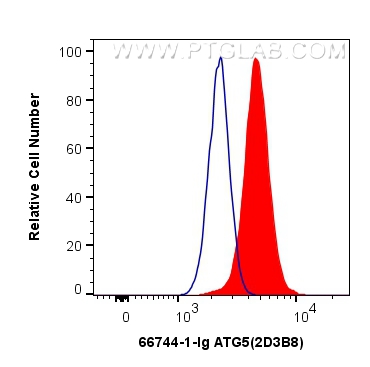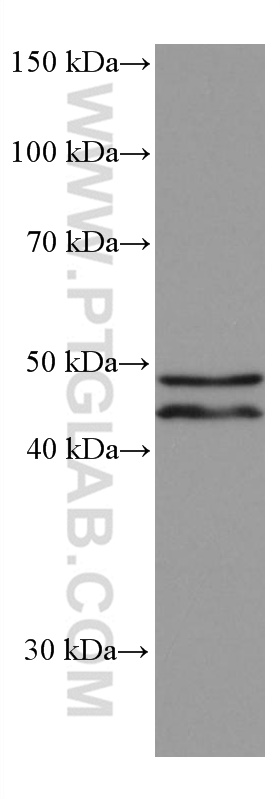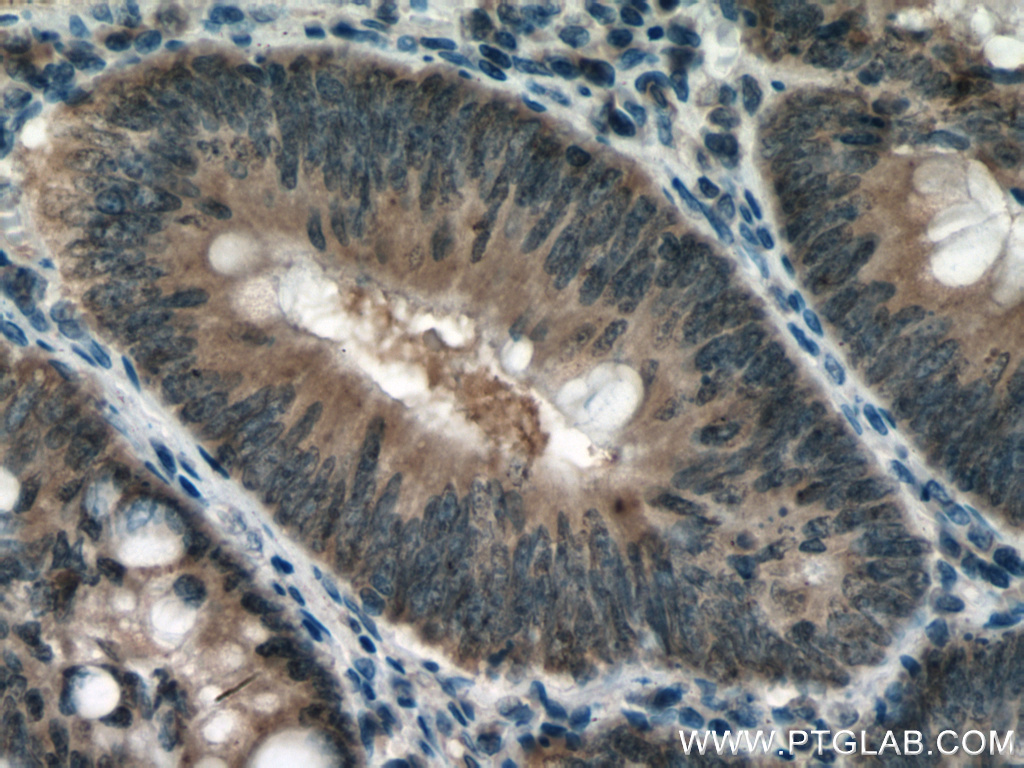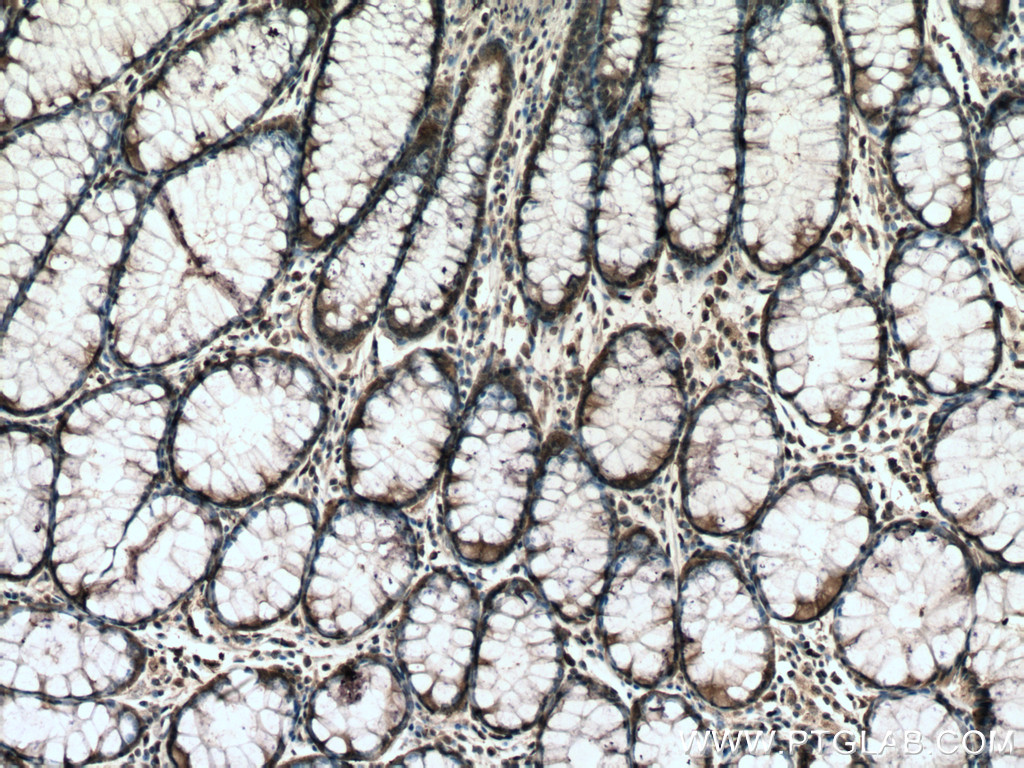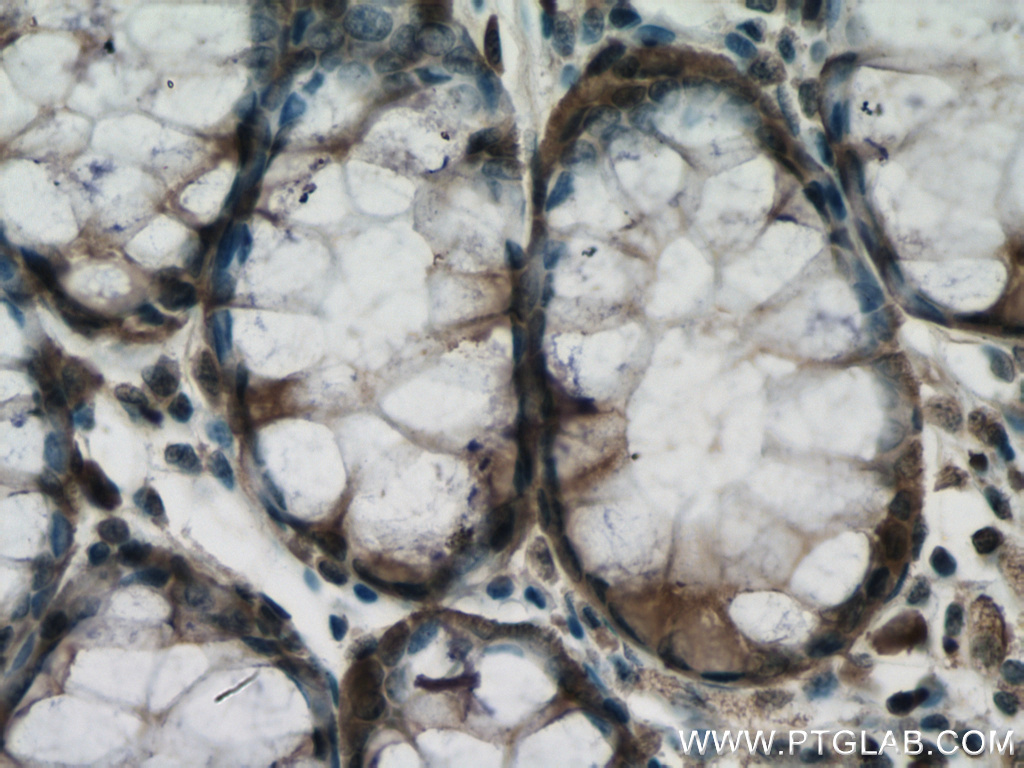- Featured Product
- KD/KO Validated
ATG5 Monoclonal antibody
ATG5 Monoclonal Antibody for FC, IHC, WB, ELISA
Host / Isotype
Mouse / IgG2a
Reactivity
human, mouse, rat and More (1)
Applications
FC, IHC, WB, ELISA and More (1)
Conjugate
Unconjugated
CloneNo.
2D3B8
验证数据展示
经过测试的应用
| Positive WB detected in | HEK-293 cells, HeLa cells, Jurkat cells, Raji cells, HSC-T6 cells, NIH/3T3 cells |
| Positive IHC detected in | human colon cancer tissue Note: suggested antigen retrieval with TE buffer pH 9.0; (*) Alternatively, antigen retrieval may be performed with citrate buffer pH 6.0 |
| Positive FC detected in | MCF-7 cells |
推荐稀释比
| Application | Dilution |
|---|---|
| Western Blot (WB) | WB : 1:1000-1:6000 |
| Immunohistochemistry (IHC) | IHC : 1:150-1:600 |
| Flow Cytometry (FC) | FC : 0.40 ug per 10^6 cells in a 100 µl suspension |
| It is recommended that this reagent should be titrated in each testing system to obtain optimal results. | |
| Sample-dependent, Check data in validation data gallery. | |
产品信息
66744-1-Ig targets ATG5 in WB, IHC, IF, FC, ELISA applications and shows reactivity with human, mouse, rat samples.
| Tested Applications | FC, IHC, WB, ELISA |
| Cited Applications | IF, WB |
| Tested Reactivity | human, mouse, rat |
| Cited Reactivity | human, mouse, rat, pig |
| Immunogen | ATG5 fusion protein Ag16685 种属同源性预测 |
| Host / Isotype | Mouse / IgG2a |
| Class | Monoclonal |
| Type | Antibody |
| Full Name | ATG5 autophagy related 5 homolog (S. cerevisiae) |
| Synonyms | APG5, APG5 LIKE, APG5L, Apoptosis specific protein, ASP, ATG5, Autophagy protein 5, hAPG5 |
| Calculated Molecular Weight | 32 kDa |
| Observed Molecular Weight | 50-55 and 40-45 kDa |
| GenBank Accession Number | BC002699 |
| Gene Symbol | ATG5 |
| Gene ID (NCBI) | 9474 |
| RRID | AB_2882092 |
| Conjugate | Unconjugated |
| Form | Liquid |
| Purification Method | Protein A purification |
| UNIPROT ID | Q9H1Y0 |
| Storage Buffer | PBS with 0.02% sodium azide and 50% glycerol pH 7.3. |
| Storage Conditions | Store at -20°C. Stable for one year after shipment. Aliquoting is unnecessary for -20oC storage. |
背景介绍
实验方案
| Product Specific Protocols | |
|---|---|
| WB protocol for ATG5 antibody 66744-1-Ig | Download protocol |
| IHC protocol for ATG5 antibody 66744-1-Ig | Download protocol |
| Standard Protocols | |
|---|---|
| Click here to view our Standard Protocols |
发表文章
| Species | Application | Title |
|---|---|---|
Gastroenterology Pancreatic acinar cells-derived sphingosine-1-phosphate contributes to fibrosis of chronic pancreatitis via inducing autophagy and activation of pancreatic stellate cells | ||
J Nanobiotechnology Cold exposure protects against medial arterial calcification development via autophagy | ||
J Nanobiotechnology Reciprocal regulation of NRF2 by autophagy and ubiquitin-proteasome modulates vascular endothelial injury induced by copper oxide nanoparticles.
| ||
Cancer Cell Int LncRNA LZTS1-AS1 induces proliferation, metastasis and inhibits autophagy of pancreatic cancer cells through the miR-532 /TWIST1 signaling pathway | ||
Chemosphere Tetrachlorobenzoquinone exposure triggers ferroptosis contributing to its neurotoxicity. | ||
Stem Cell Res Ther Oncostatin M receptor regulates osteoblast differentiation via extracellular signal-regulated kinase/autophagy signaling. |
